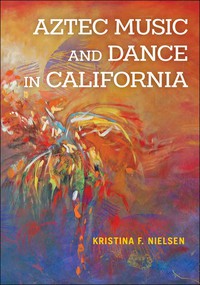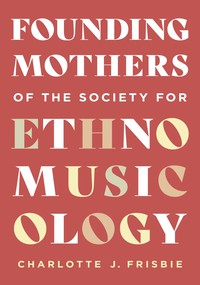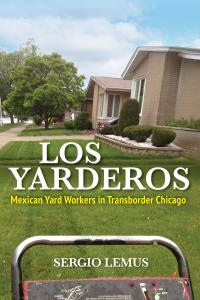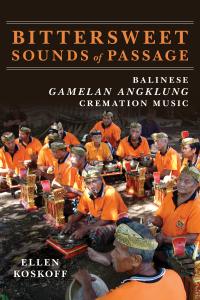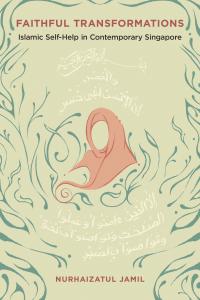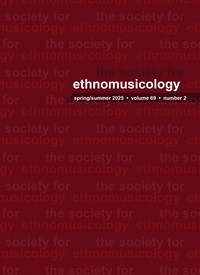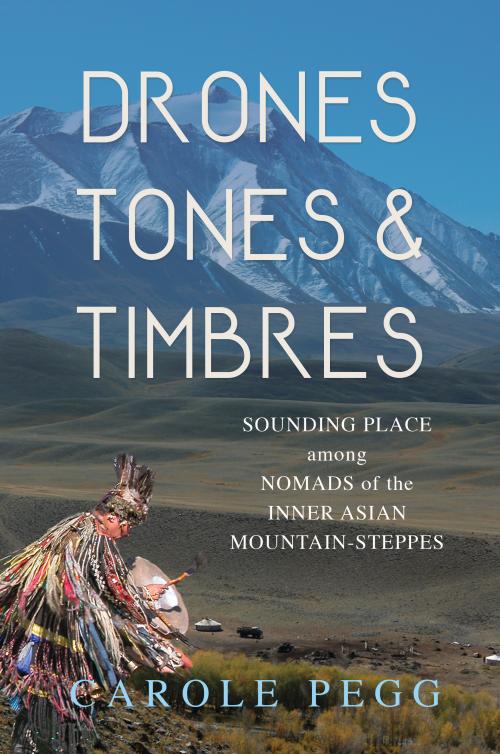
Drones, Tones, and Timbres
About the Book
Based on more than twenty years of collaborative research, Carole Pegg’s long-awaited participatory ethnography explores how Indigenous nomadic peoples of Russia’s southern Siberian republics (Altai, Khakassia, Tyva) sound multiphonies of place in a post-Soviet global world. Inspired by the mountain-steppe ecology and pathways of nomadism, soundscapes created in performative ritual events cross political and multiple-world boundaries in a shamanic-animist universe, enabling human and spirit actor interactions in a series of sensuous worlds. As with the “throat-singing” for which Indigenous Altai-Sayan peoples are famous, senses of place involve sonic relations, rootedness, movement, and plurality. Pegg echoes their drone-partials musical and ontological models in an innovative theoretical entwinement. Three strands form the book’s multivocal drone, the partials of which sound in each chapter: ontological sonicality and musicality that enables emplacement and movement; the importance of shamanism-animism--at the core of Indigenous spiritual practices--for personhood and community; and the agency of sonic performances. Sounding place, Pegg demonstrates, is essential to the identities, ways of life, and very senses of being of Indigenous Altai-Sayan peoples.* Publication of this book was supported in part by the University of Illinois Press Fund for Anthropology.
About the Author
Carole Pegg is an anthropologist, ethnomusicologist, and senior researcher at the University of Cambridge. She is the author of Mongolian Music, Dance, and Oral Narrative: Performing Diverse Identities.Reviews
Blurbs
"The fruit of decades of musicianship, energetic fieldwork, and thoughtful reflection, Pegg’s monumental book is one of those once-in-a-generation works. It will be of great interest to anthropologists, musicologists, and people interested in shamanism, oral poetry, performance theory, human geography, landscape, archaeology, spirituality, ecology, and ethnic/Indigenous studies. In dialogue with local understandings and feelings, the author is vividly present while always foregrounding the people and their music, and showing how their music animates the cosmology and landscape through which it, too, comes alive."--Piers Vitebsky, author of Reindeer People: Living with Animals and Spirits in Siberia and Living without the Dead: Loss and Redemption in a Jungle Cosmos
Supplemental Links
Read a Q&A with the authorSupplemental Material
Supplementary Materials: Audio, Video, and Photographs
Chapter 1: Performative Bodies
Chapter 2: Human Communities
Chapter 3: Spirit Actors, Spirit Places, Nomadic Landscapes
Chapter 4: Ancestors and Archaeology
Chapter 5: The White Way
Chapter 6: With-Spirit Epic Performers
Chapter 1: Performative Bodies
1.1. Hunter-fisherman Lazar' Tyumerekov makes a khobyrakh pipe from nature and plays it. Tashtyp region, Altai, 2005.
1.2. Musician Radik Tülüsh performs My Bai Taiga with shoor flute. Övür region, Tyva, 2005 (Tülüsh 2007D)
![]() My Bai Taiga
My Bai Taiga
Chapter 2: Human Communities
2.1. Pavel Borgayakov plays Cheek chaa (Devastating War) with khai vocal tone and chatkhan zither. Lower Töö, Khakassia, 2004.
![]() Cheek chaa (Devastating War)
Cheek chaa (Devastating War)
2.2. Valentina Chechaeva and Elena Mandaeva perform Shonu jangar. Kulada, Karakol Valley, Ongdoi region, Altai Republic, 2010.
![]() Shonu jangar (ritual song)
Shonu jangar (ritual song)
2.3. Oirot Otukov performs Chuideng salkyny (The Wind of Chui), accompanied by topshuur lute and the spirit of the wind. Ortolyk, Kosh-Agash region, Altai Republic, 2006.
2.4. "Nogon" Shumarov performs Üch-Sümerge maktal (Praise song to Mount Üch Sümer) (extract), with khai vocal tone accompanied by the topshuur lute, during musical offerings to the spirit-owners of place at his hereditary family camp. Singing Forest, Karakol valley, Ongdoi region, Altai Republic, 2006.
2.5. Sarymai Urchimaev offers a range of shoor end-blown flute sounds and bird and animal cries to the spirit-owners of place. Singing Forest, Karakol valley, Ongdoi region, Altai Republic, 2006.
Chapter 3: Spirit Actors, Spirit Places, Nomadic Landscapes
3.1a. Radik Tülüsh performs nasal kargyraa (dumchuktaar kargyraa) to the spirit-owners of Middle Pass. Tangdy-Uula mountain range, Tyva, 2005.
![]() Kargyraa (Dumchuktaar Kargyraa)
Kargyraa (Dumchuktaar Kargyraa)
3.1b. Radik Tülüsh performs khomus jaw's harp with the crickets at the entrance to Middle Pass. Tangdy-Uula mountain range, Tyva, 2005.
![]() Khomus jaw's harp with the crickets
Khomus jaw's harp with the crickets
3.2. Mountain shamaness "Tadi" Burnakova performs a healing ritual (extract). Chogharkhy (Upper) Töö valley, Askhys region, Khakassia, 2005.
Chapter 4: Ancestors and Archaeology
4.1a. Trunk-shaped Sunduki, the first of eight sandstone mounts rising from the flood plain of the Akh Üüs River, central Khakassia 2002.
4.1b. An obaa rock cairn decorated with ritual ribbons behind the summit of the first Sunduki mount, 2004.
4.2. "Sasha" Samozhikov and his wife "Stesha" perform "What Are You" accompanied by the chatkhan zither and khomys lute. In the background is Sunduk Mount 1. Scenes from an ancient epic narrative from Sunduk Mount 4 are also shown. Sunduki, Syra region, Khakassia 2004.
4.3. Sergei Charkov plays the khomys lute and his daughter Yulia the yykh fiddle to accompany the song Khaijylar (Epic Performers) using khai vocal tone. Chaa Tas War Stones, Uibat Steppe, Khakassia, 2005.
4.4a. Body of Sibdei Tom's khomys lute bearing an image of the "Girl Stone" from Tamzin, Aghban piltïrï region, Khakassia, 2005.
4.4b. Wild ram's head on the crown of an yykh fiddle and its pegbox as monolith, carved by Khakas musician and instrument-maker Sergei Charkov.
4.4c. The three-eyed mask from an ancient stele copied onto the pegbox of Khakas musician Ai Charykh Saiyn Küchen's yykh fiddle.
Chapter 5: The White Way
5.1. Epic performer Elbek Kalkin performs a song about the imminent arrival of Oirot Khan, accompanying himself with the topshuur lute, in his chadyr home. Kan-Oozy region, Altai Republic, 2006.
5.2a. Didii Toloeva and Müngülchi Bairysheva perform Ak Jang songs. Yakonur, Kan-Oozy region, Altai Republic, 2002.
5.2b. Didii and Müngülchi perform a jangar ritual song about the hero Shunu. Yakonur, Kan-Oozy region, Altai republic, 2002.
![]() Shonu jangar (ritual song)
Shonu jangar (ritual song)
5.3a. Participants of an Ak Jang ritual begin the mountain climb. Ritual leader Arzhan Közörökov performs a final musical offering in kai vocal tone, accompanied by the topshuur lute, at the fire altar. Lower Talda's mountain temple, Ongdoi region, Altai Republic, 2010.
5.3b. Arzhan Közörökov begins the ritual by sprinkling milk on cheese figurines and altars while performing alkysh requests for blessing, and the hostess bows after making food offerings on the fire altar. Lower Talda's mountain temple, Ongdoi region, Altai Republic, 2010.
Chapter 6: With-Spirit Epic Performers
6.1. Tyvan Dugul-ool Chambal of the Khertek clan performs kargyraa drone-partials vocal music on his way to the hunt. Kyzyl-Khaya, Mönggün Taiga region, 2003.
![]() Chambal performs kargyraa
Chambal performs kargyraa
6.2. With-spirit epic performer Elbek Kalkin performs the prelude to the Maadai Kara epic, seated before his father Aleksei Gregor'evich's portrait, skin-faced topshuur lute and gown. Yabogan, Kan-Oozy region, Altai Republic, 2006.
6.3. Chatkhan zither player Pyotr Aryshtaev performs the opening passage of Kadyshev's version of the epic Altyn-Arygh. Azakh Sööt, Syra region, Khakassia, 2004.
 Kadyshev's version of the epic Altyn-Arygh
Kadyshev's version of the epic Altyn-Arygh
